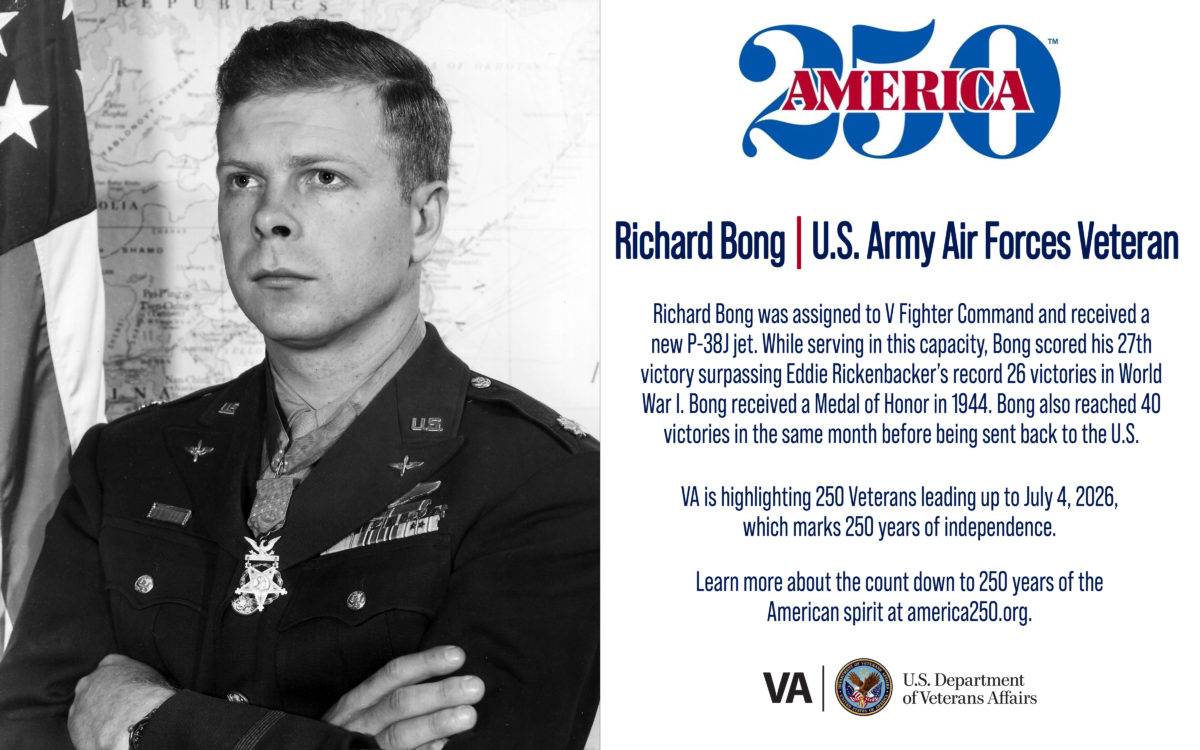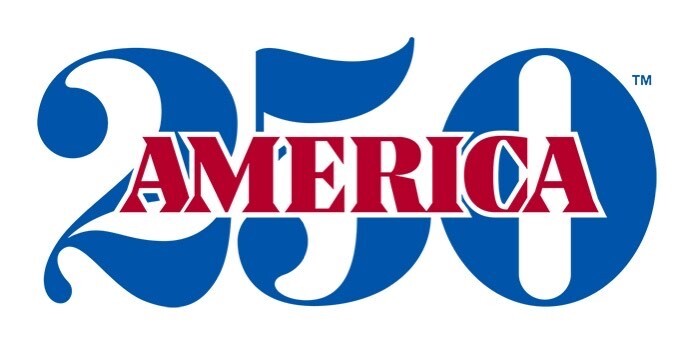
This week’s America250 salute is Army Air Forces Veteran Richard Bong.
Richard Bong was enamored of flying from an early age. As a young child, he watched mail aircraft fly over his family’s farm to deliver mail to President Calvin Coolidge’s Summer White House in Superior, Wisconsin. From that moment on, he knew he wanted to fly.
Born in September 1920, Bong grew up working on his family’s farm and was active in his youth. When not on the farm or studying, he was often found hunting, fishing, playing sports and building model aircraft. Graduating high school in 1938, Bong attended Superior State Teachers College to study engineering.
During college, Bong completed the Civil Pilot’s Training Program and earned his private pilot license. He also joined the Army Air Forces aviation cadet program. There, he caught the attention of instructors who praised Bong’s flying skills. After training, Bong earned his pilot wings and entered the Army Air Forces Reserve as a second lieutenant in January 1942.
Bong later transferred to Hamilton Field in California for aerial combat training in the Lockheed P-38 Lightning. There, he quickly gained notoriety for antics like flying loops around the Golden Gate Bridge and blowing a woman’s clothes off her clothesline during a flyby. For the latter incident, Bong was sent to finish the woman’s laundry.
In September, Bong deployed to Australia with the 9th Fighter Squadron, 49th Fighter Group to serve in World War II. He was temporarily reassigned to the 39th Fighter Squadron to gain combat experience. His first combat experience came on Dec. 27, when Japanese forces attacked the Allies near New Guinea. Bong earned two aerial victories, and his squadron downed 12 aircraft.
Returning to his initial squadron in February 1943, Bong arrived in time for the Battle of Bismarck Sea. Unfolding in March, the battle lasted three days. On the first day, Bong downed one enemy aircraft while escorting Allied aircraft on their way to Lae, Papua New Guinea. While the Allies were victorious, the Japanese retaliated with an attack on Bong’s base. Flying his P-38, Bong destroyed two enemy aircraft during the fight and successfully returned to his base despite a damaged wing and engine.
During the summer, Bong engaged with Japanese forces near Cape Gloucester. Despite flying a damaged aircraft, Bong managed to shoot down a Japanese aircraft, earning him 16 victories. After completing a series of missions, Bong was sent back to the U.S. to meet Gen. Henry H. “Hap” Arnold and went on a promotion tour before returning to New Guinea. There, he was assigned to V Fighter Command and received a new P-38J jet. Allowed to choose his missions, Bong took advantage of the opportunity and worked with Maj. Tommy Lynch, an ace who had 20 victories and with whom Bong had a friendly rivalry. However, during a mission on March 8, 1944, the two were strafing Japanese barges when Lynch’s aircraft was hit by enemy fire, leading to a fatal crash.
In April, Bong earned his 25th victory when he downed an enemy aircraft near Hollandia, New Guinea. He earned two more victories there. Bong eventually earned his 27th victory in the same month, breaking Eddie Rickenbacker’s record of 26 victories in World War I. During early October, Bong earned his 30th victory during a raid on Japanese oil refineries in Balikpapan, Borneo. However, after hearing of Bong’s role in the raid, Gen. George Kenney barred him from similarly dangerous missions.
By now, Bong was not required to complete combat missions. However, he continued in dangerous combat missions late into 1944. Between October and November, Bong downed eight enemy aircraft. Gen. Kenney recommended Bong to receive a Medal of Honor. After approval, Gen. Douglas MacArthur presented the award to Bong in December. After receiving the award, Bong achieved a record 40 aerial victories before being sent back to the U.S.
Back in the U.S., Bong worked as a test pilot. He was killed in August 1945, when the P-80 jet he was test flying for Lockheed crashed in California.
For his service, Bong earned a Medal of Honor, Distinguished Service Cross, Silver Star with an Oak Leaf Cluster, Distinguished Flying Cross with six Oak Leaf Clusters and an Air Medal with 14 Oak Leaves.
We honor his service.
About America250
VA is highlighting 250 Veterans leading up to July 4, 2026, which marks 250 years of independence. Learn more about the count down to 250 years of the American spirit at https://america250.org/.
Contributors
Writers: Raymond Lin
Editors: Julia Pack, Annabelle Colton
Fact Checker: Timothy Georgetti
Graphic Designer: Kiki Kelley




